The so called Valley of the Temples in south-western Sicily sprawls along the ridge tops near the town of Agrigento. The ridge falls away to valleys on both sides, one lush green and treed toward the town and another over brown then manicured fields to the ocean. On this side the fields are divided by a Plane tree lined road that follows the southern central coast toward Trapani on Sicily’s N-W tip.
It is puzzling how these ridge top temples got theValley misnomer or why the name has stuck. The temples of what was the ancient town of Akragas (Agrigento) were purposely built on the ridge to guide their sailors home.
[pinit]
The View to Agrigento from the ridge.
The other view to the Ocean. Great views!
A site split in two.
The site is split into the Eastern and Western zones. The Eastern holds the most impressive ruins including the Temple of Concordia. We were in such a rush (a shame I know, but better to see some rather than none) that we just zoned straight in on the Temple of Concordia and other sites that we stumbled upon.
The remains of the Temple of Zeus with Agrigento in the background.
Arriving at the Valley of the Temples
Our (my) plan was to leave Modica and drive north-west via Piazza Armerina (recently uncovered villa mosaics) and on to Palermo airport where we would return our rental vehicle.
I should have known Marty was planning a coup when we somehow visited Piazza Armerina on a day trip from Modica. I thought this was merely to enable a less hurried trip through the centre of Sicily to Palermo on the day of our departure. However on that morning he threw his curve ball.
I’ve noticed over the years that Marty hates driving the same route twice and admittedly we’d had a horrible time on the return journey with the contradictory road signs. He proposed instead driving west through the Mafia hangout of Gela, past the Valley of the Temples at Agrigento, changing to the A29 just before Castelvetrano, then on to Palermo Airport – Google Maps suggested a trip time of 7 hours 15 minutes. Marty was hopeful from the start that we would have time to visit the temples. I was not so sure.
As is the Sicilian way, the trip took longer than expected, mainly due to traffic congestion in Gela and by the time we approached Agrigento, the schedule was out the window. I was waffling on about there not being enough time to stop, when we simultaneously spied the temptingly visible Concordia up on the ridge. With the Cha-Ching of late penalty fees ringing in my ears, our vehicle magically diverted off the highway toward it.
Frustratingly it took an hour (the coup leader refutes this fact) to locate the correct entrance, park, pay, cross the overpass and gallop along the ridge to …
The Temple of Concordia.
For those who like facts and figures, the temple is 6 columns wide and 13 columns long, each column having 20 fluted grooves running top/bottom. Built as a Pagan Temple in 430 BC, Concordia become a Roman Catholic church in 597 at which time it acquired the arched wall structure within (restored back to a temple in 1748).
Back in time the columns were covered in white stucco and the roof with marble tiles, a combination that would have dazzled on a sunny day, but I quite like it’s current earthy tones. This temple is one of the most recognisable and important remains of the ancient Greek civilisation, it’s facade represented in the iconic Unesco logo.
There are two schools of thought as to why this temple in particular survived intact. The first is the flexible layer of clay concealed, maybe knowingly, beneath it’s rock foundations, cushioning the temple from the earth’s movements. The other is the internal arched walls added when it transitioned to a church.
The long straight pedestrian road within the site builds suspense with direct temple views into the distance.
The Agrigento side of the ridge with it’s low long uninterrupted stone wall, offers uninterrupted views of the new town.
Statue of Icarus
A bronze statue of a fallen Icarus lies in discarded fashion on the ground beyond the Temple of Concordia. It’s been there since 2011 when it formed part of an exhibition of (17) sculptures by the Polish artist Igor Mitoraj. The statues, some of supersized proportions, would have added an extra dimension to a day at the archaeological ruins. I couldn’t help wishing our visit coincided with what was one of Mitoraj’s most popular exhibitions.
Tip: Look for the hidden Medusa head in the wings of Icarus.
The way the statue is posed on the ground adds interest and accessibility, especially for children.
Girgentana Goats
A fenced enclosure houses a small herd of Girgentana goats. Originating from the Kashmir/Afghanistan region, the goats arrived on Sicily’s south-western shores via either the ancient Greeks or Arabs. At one stage they numbered 30,000 but today they are endangered with numbers in the hundreds. The breed is characterised by curved (mono) horns joined in the middle, long beards/hair and high milk yields.
I was basically raised alongside my grandmother’s herd of domestic milking goats and their rascally character makes them a definite favourite of mine. The overwhelming majority of our goats were short haired, with a good expanse of head showing between their horns. Our one long haired goat was forever getting burs stuck in her long locks. I wonder how the Girgentana goats coped with this problem in the wild.
An Association has been formed specifically to protect the goats and see them reintroduced to their traditional territory in the Valley of the Temples.
Unfortunately they were on a lower level out of my reach.
Early Christian Necropolis
Temple of Heracles or Hercules (Tempio di Ercole)
Eight columns from this temple erected at the end of 6BC have been raised and the rest are spread around nearby.
Temple of Dioscuri
This display is a 19th Century reconstruction, using pieces found nearby. In Greek and Roman mythology the Dioscuri were twin brothers Castor and Pollux who, after Castor’s death, were transformed by Zeus into the constellation of Gemini. Wow!
Ancient building blocks?
I have no explanation for these blocks resting beneath the trees, other than they seem to be biding time.
Villa Aurea.
Near the Temple of Heracles (Hercules, Ercole) this Villa, the 20th Century home of Englishman Sir Alexander Hardcastle now houses park management and is inaccessible. That bronze statue in the forecourt is of Hardcastle, the ex army captain who funded many excavations on the ridge, carried out by Pirro Marconi. It was his initiative to re-erect the 8 columns of Heracles and he is now buried in Bonomorone cemetery, Agrigento – as close as possible to his beloved temples.
More to see.
There is so much more to see at this site, like the Temple of Juno (also known as Hera) with columns and sacrificial alter, Tomb of Therone and the fallen stone Olympian atlas figures.
Was the “Valley of the Temples” worth the diversion?
Having bolted back to the car, we drove non-stop, scoffing pre-made salad rolls in the car and hoping like crazy that we wouldn’t get lost again. The car rental company overlooked our late arrival at Palermo Airport, but having located the connecting bus promptly we then had to wait 20 minutes for departure. On arrival at Palermo train station we found our way on foot to our Airbnb apartment, arriving 1 hour and 15 mins late. My brain felt like it, instead of my luggage, had rattled and bumped it’s way across a thousand paving blocks.
Was the diversion worth it?
As Marty said “We had to do it because we might never have another opportunity to see such an ancient intact temple up close”.
I agree, the answer is YES.
This was our route.
Budget Travel Talk.
Entrance cost – 10 euro each. This was good value because of the number of sites, the spectacular Temple of Concordia and the great views.
A different plan would have seen us staying overnight at Agrigento, with views back to the temple on the ridge, which by all accounts is beautiful under lights, or at the town’s beach suburb of San Leone. Another beachy place to visit is Scala dei Turchi, 15km west near the town of Realmonte, where the white sedimentary rocks descend in terraces to the water, reminiscent of Pamukkale in Turkey.
I found this video of Scala dei Turchi on Utube.
Thanks for visiting, I really appreciate it and would love you to add your travel post to the link below for Nancie’s Travel Photo Thursday which I co-host with Ruth from Tanama Tales and Rachel from Rachel’s Ruminations.

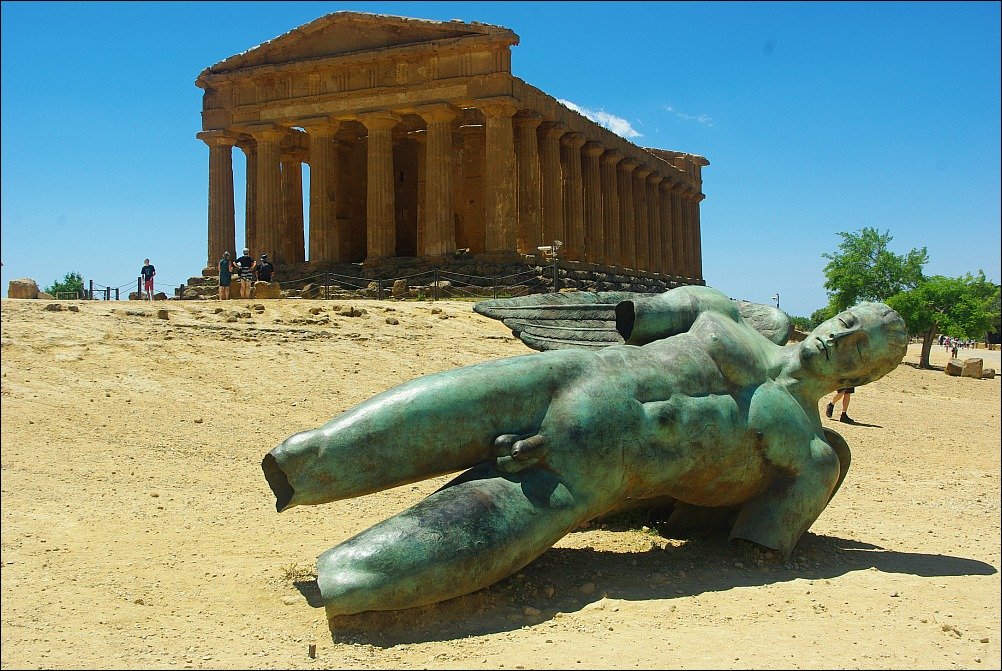
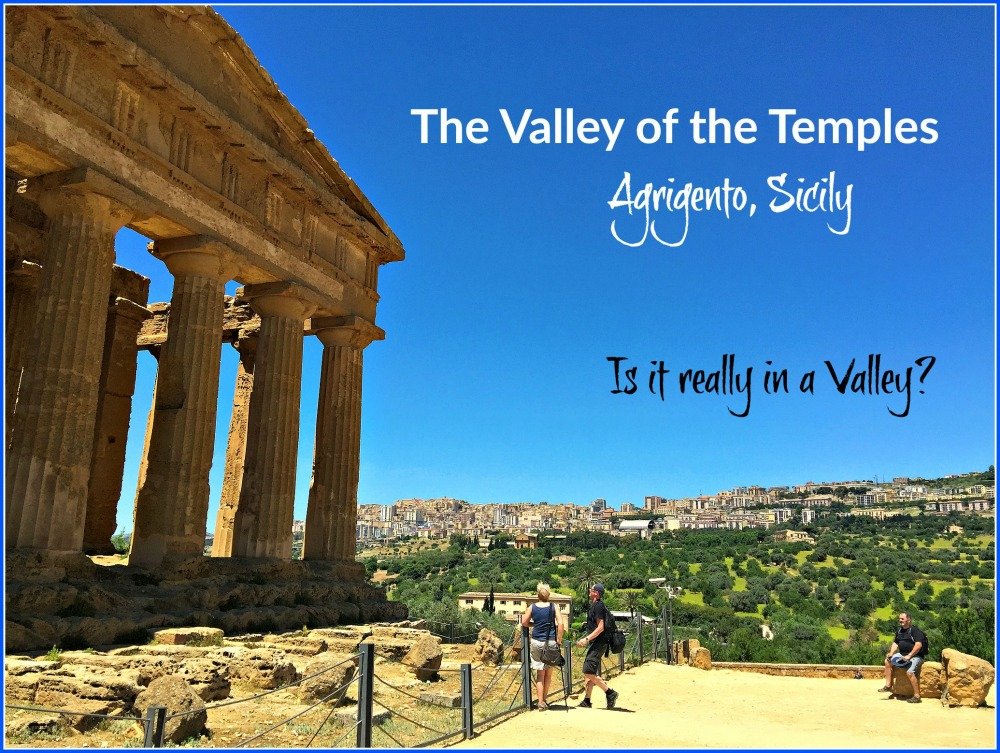
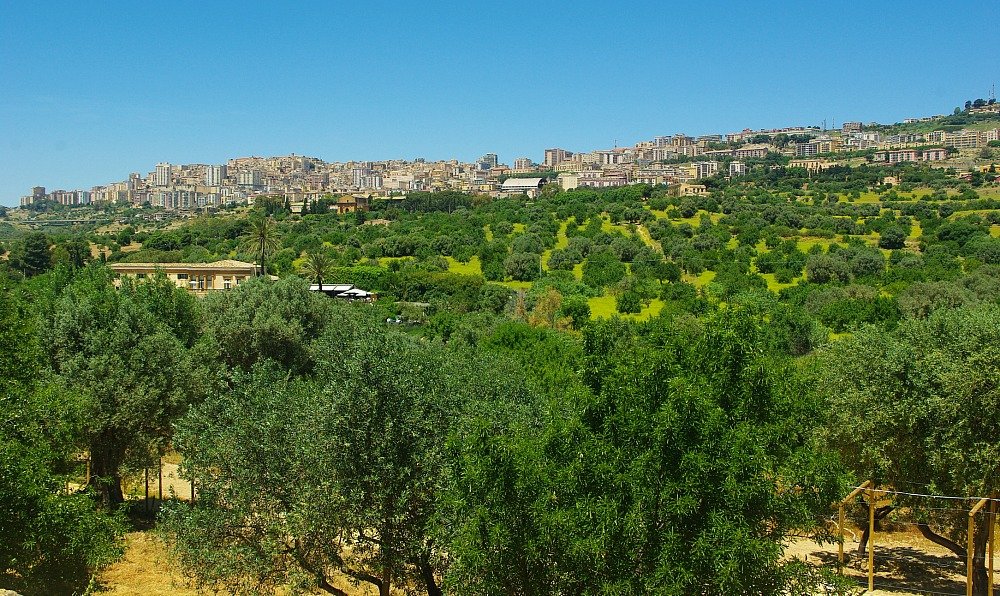
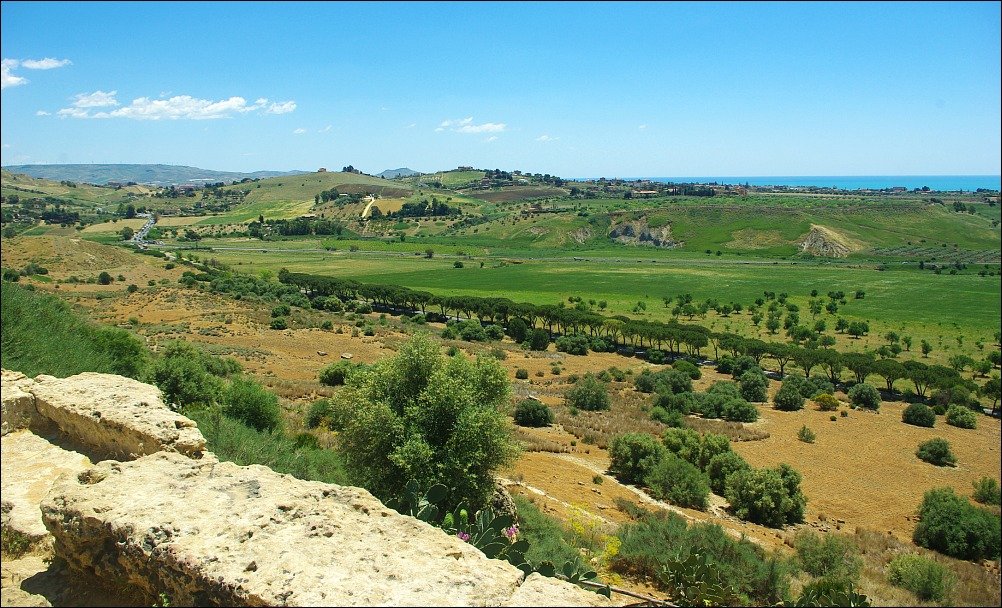
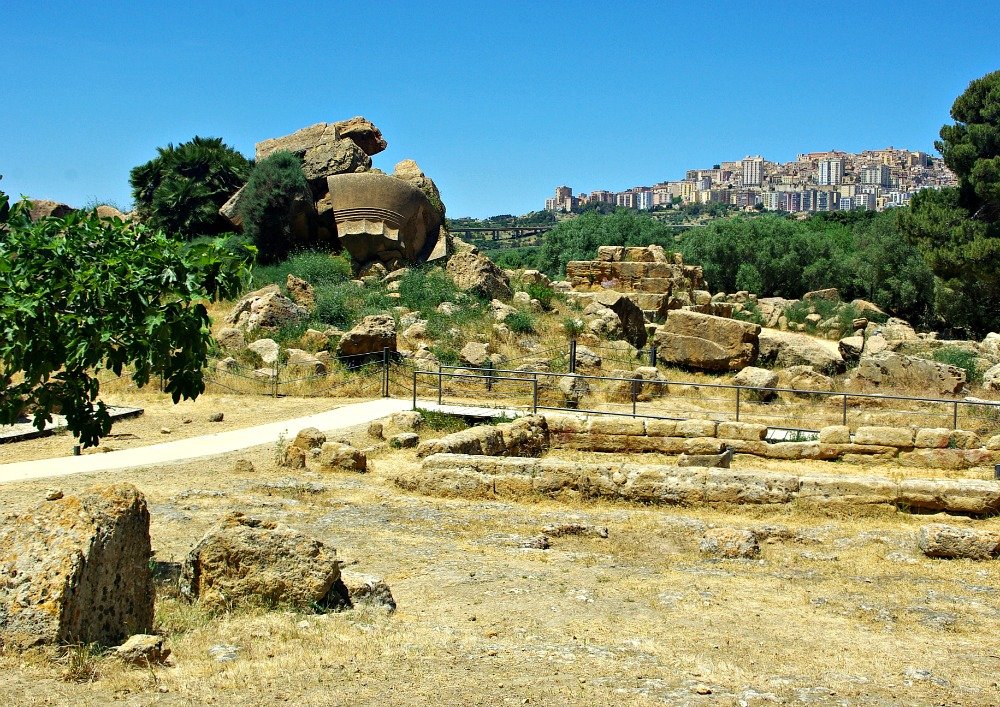
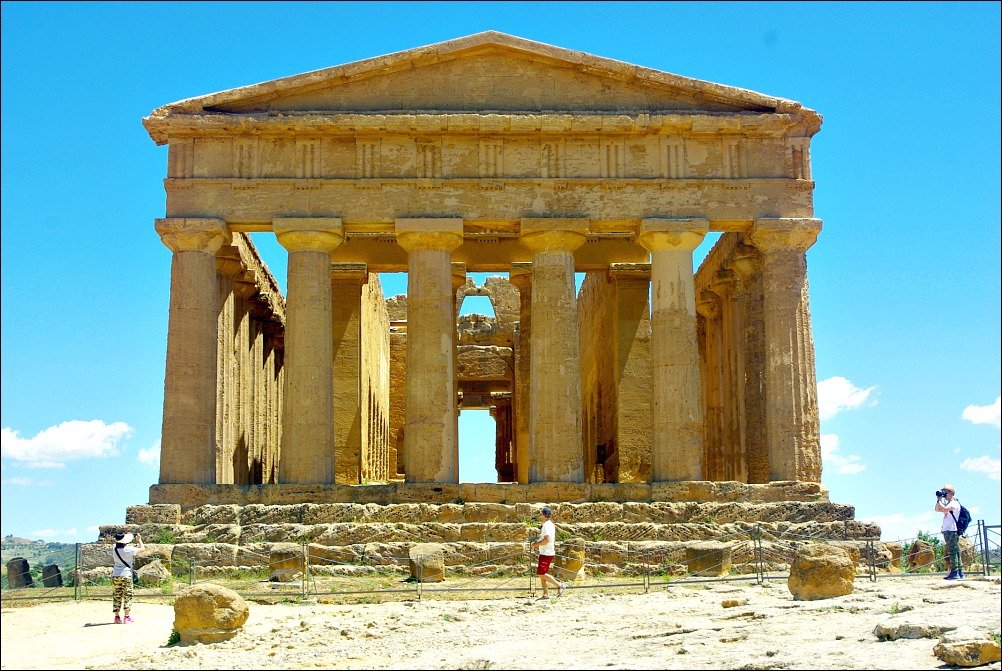

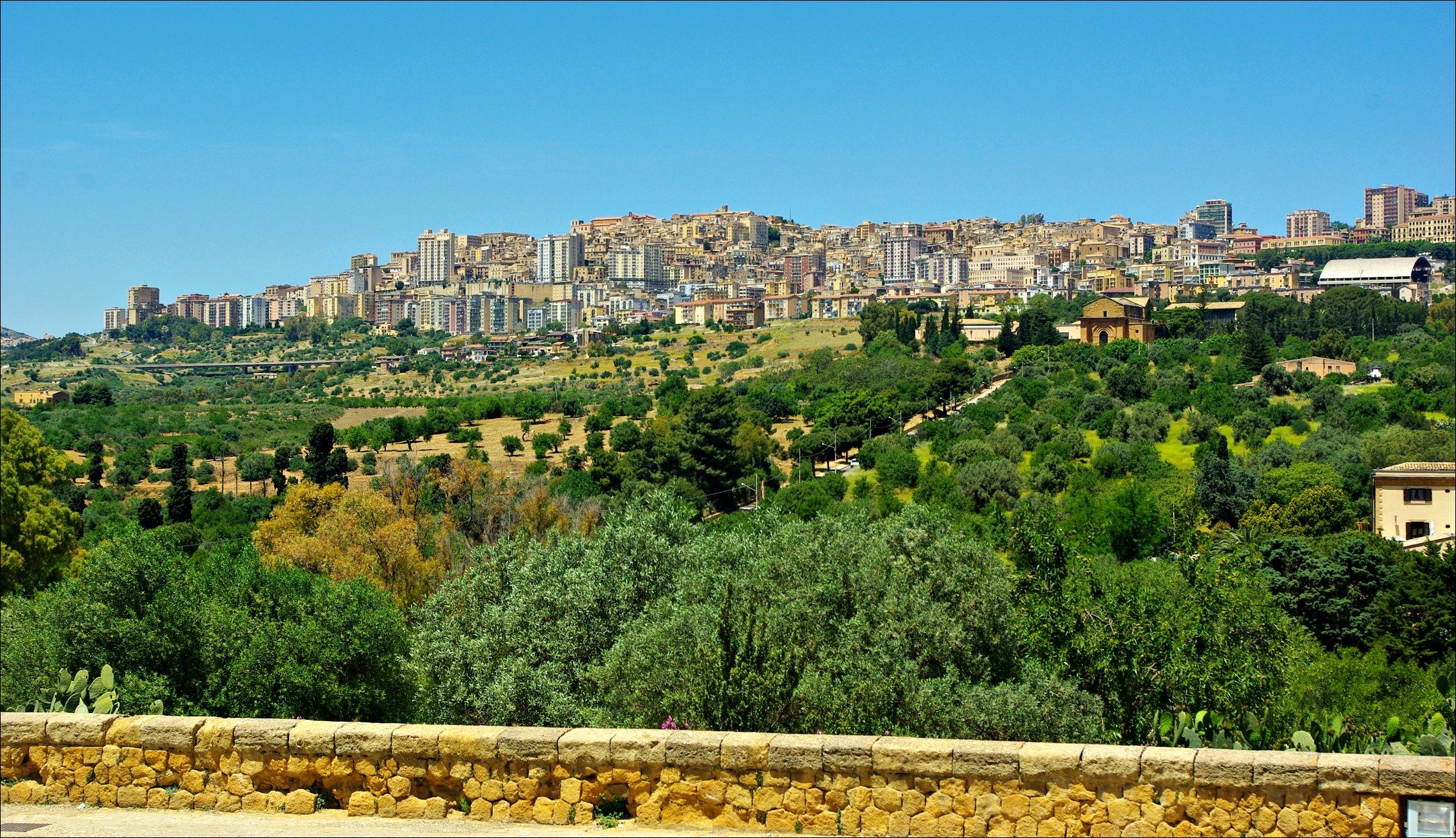

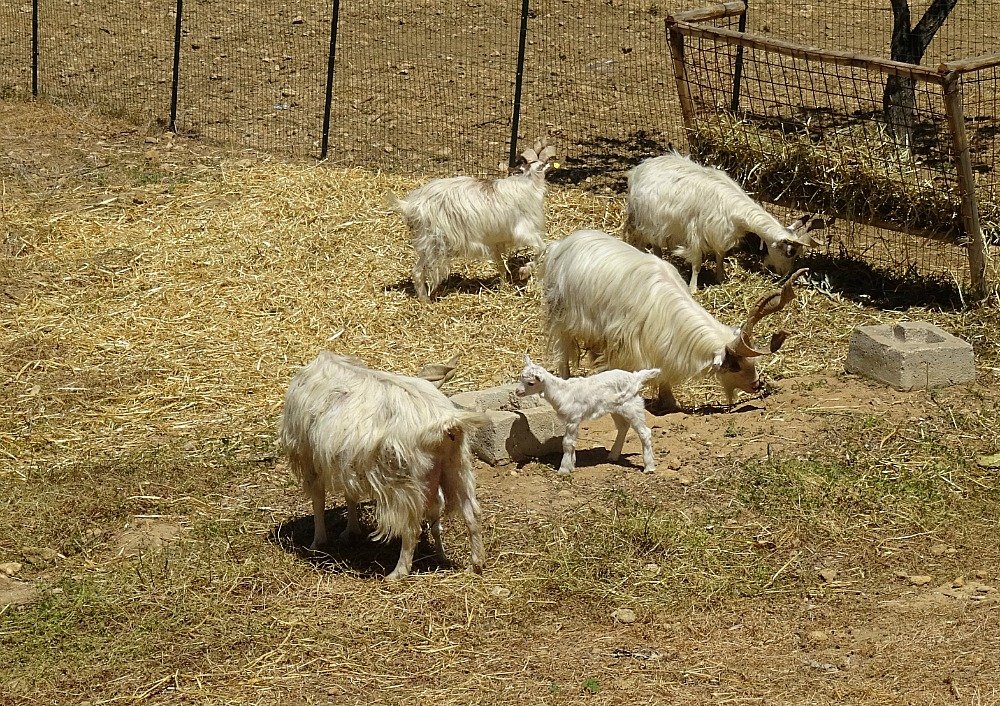
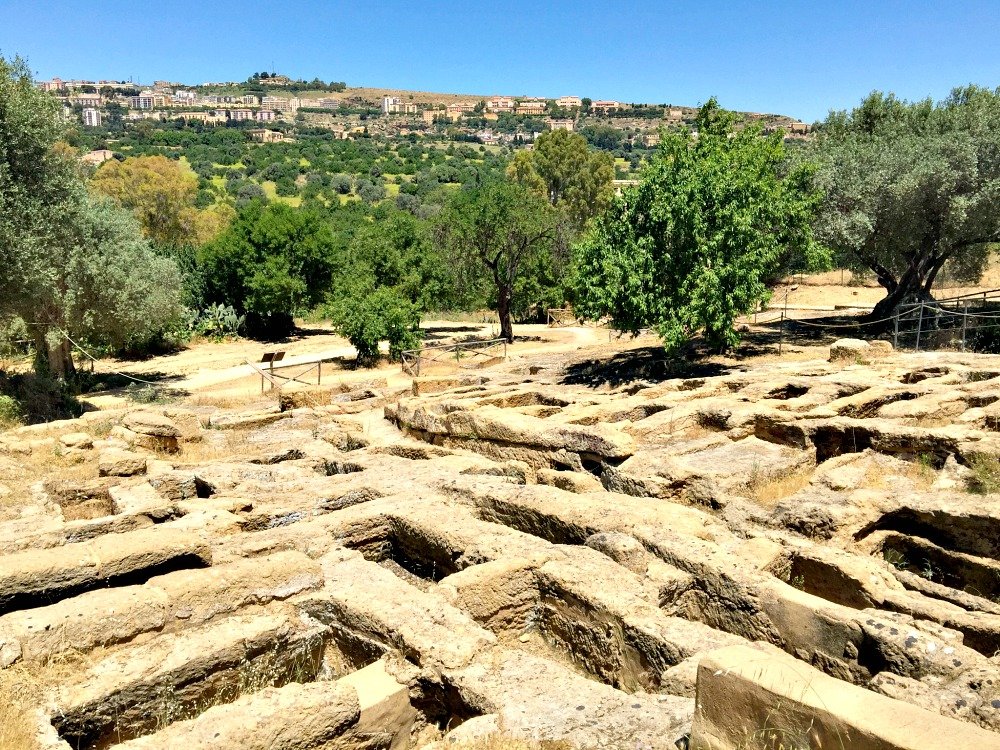

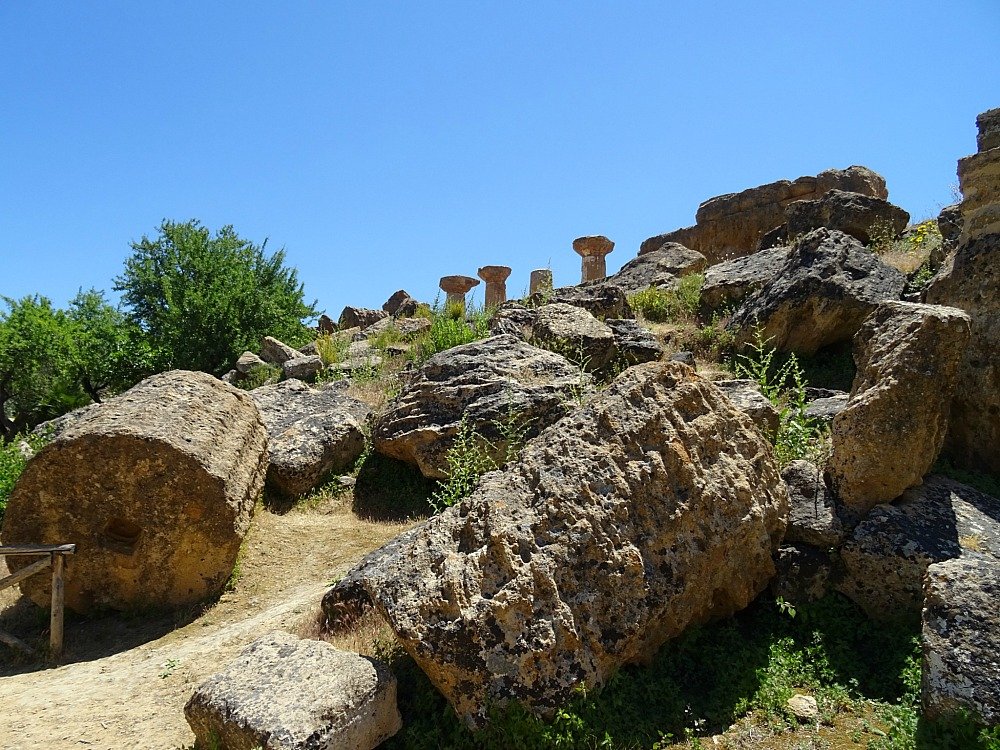
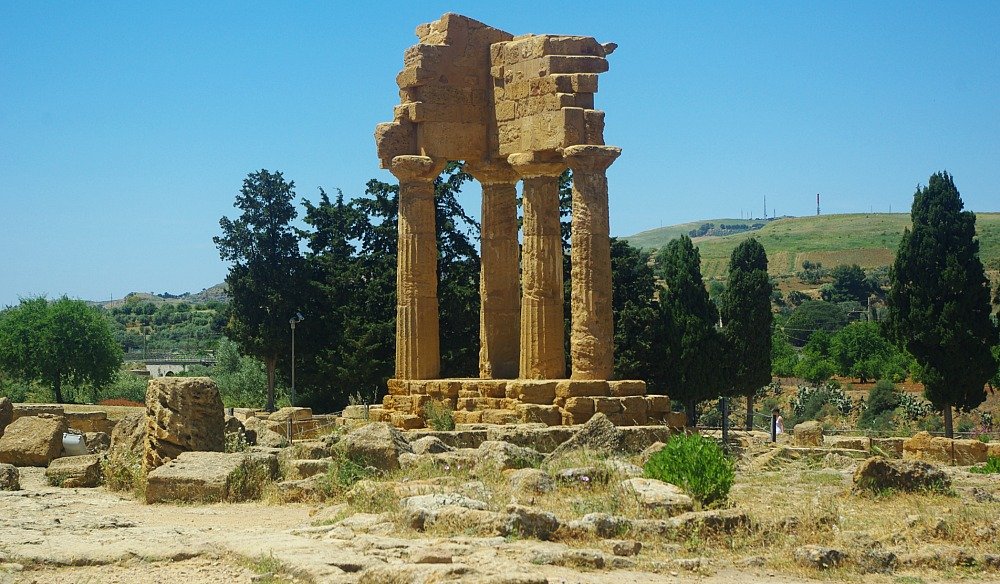
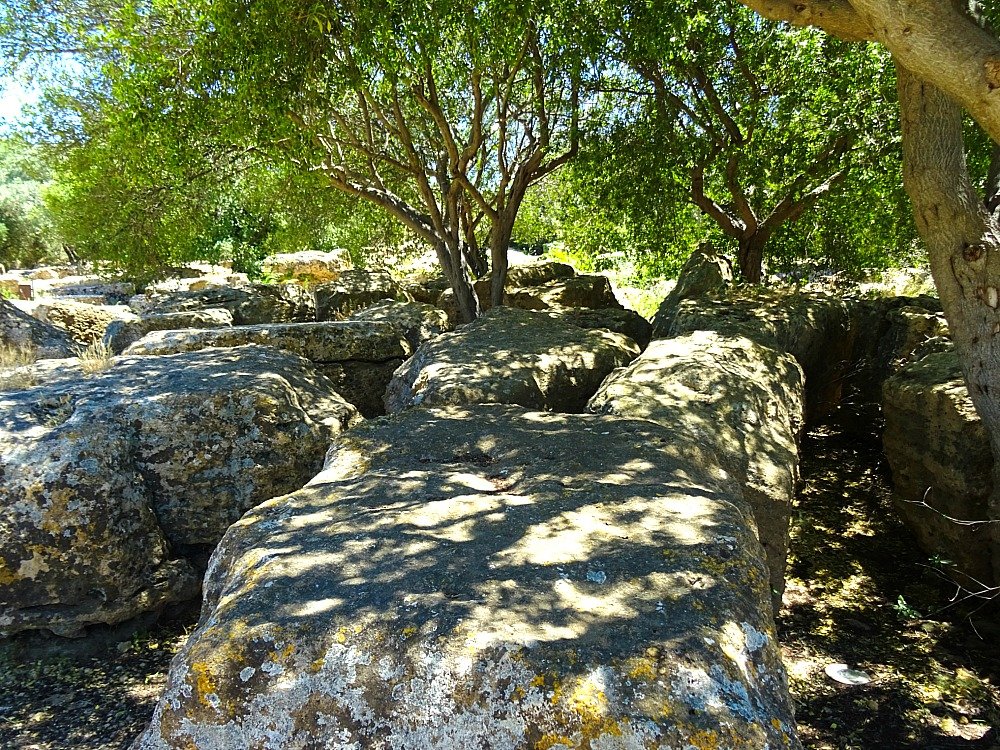
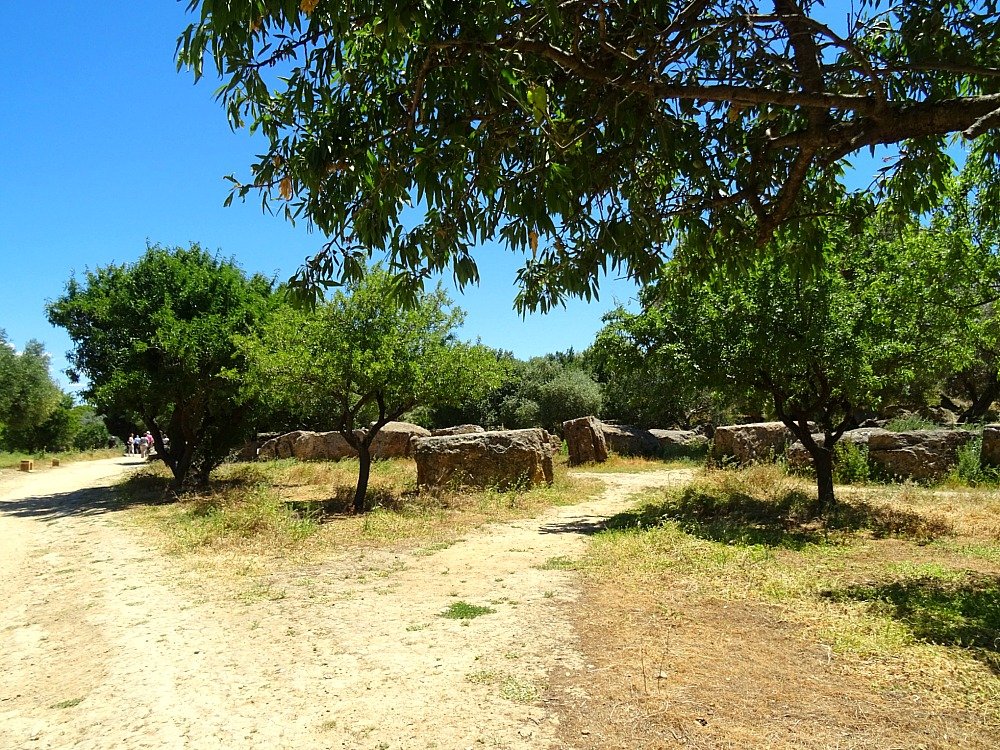
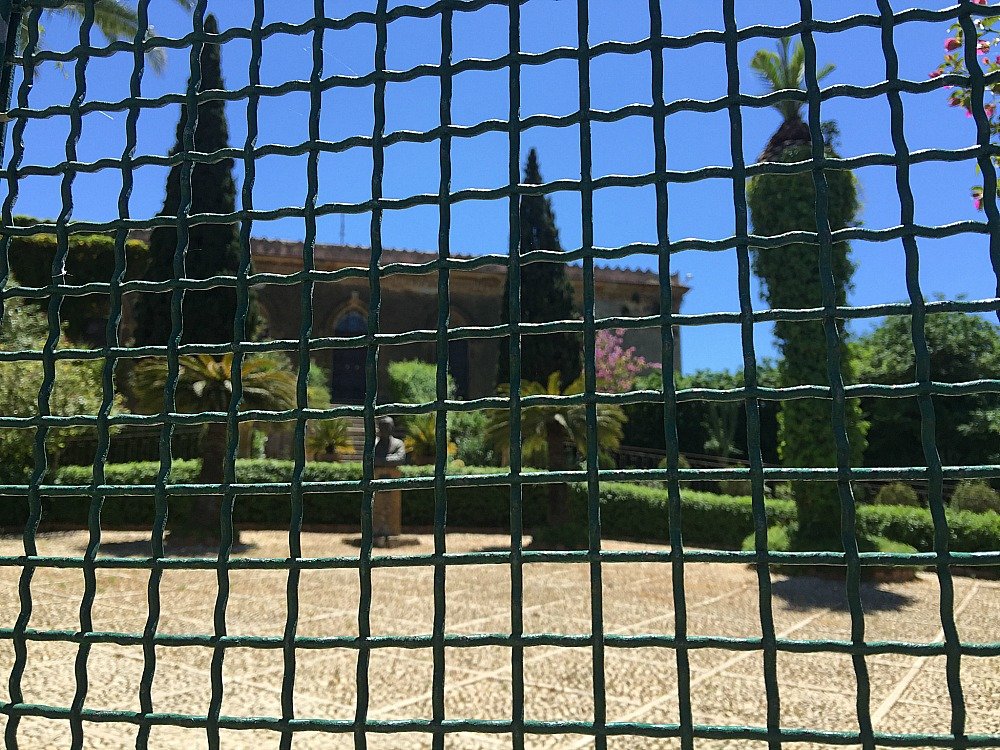

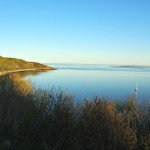
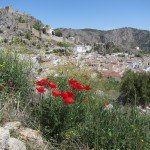
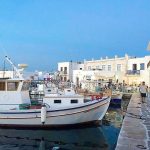
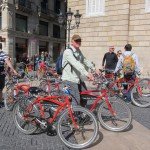
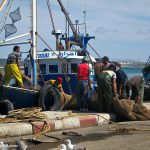
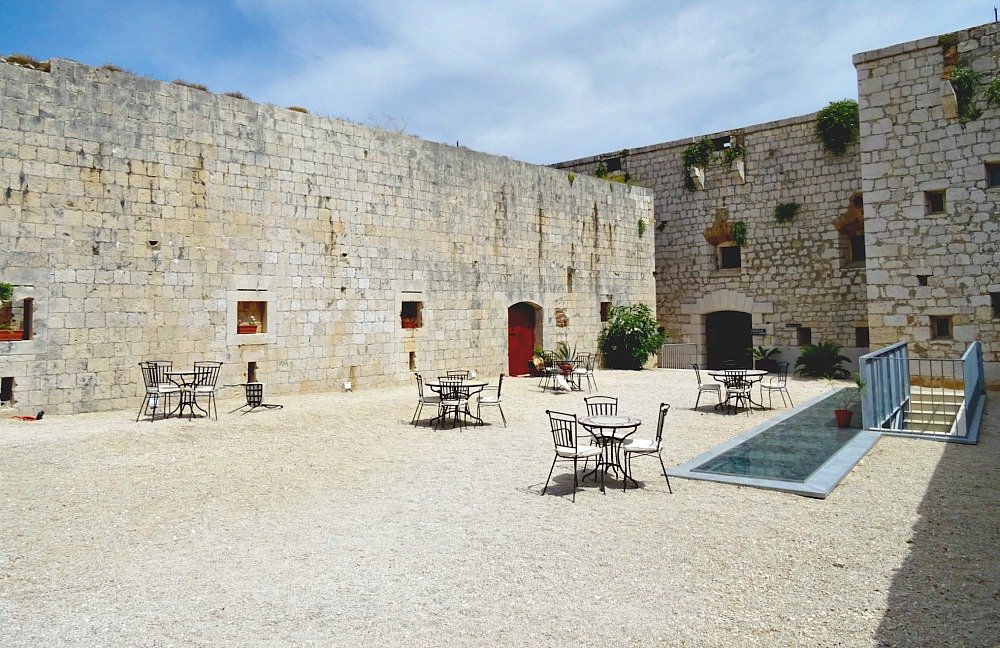 Fort George and beyond on Vis Island Croatia
Fort George and beyond on Vis Island Croatia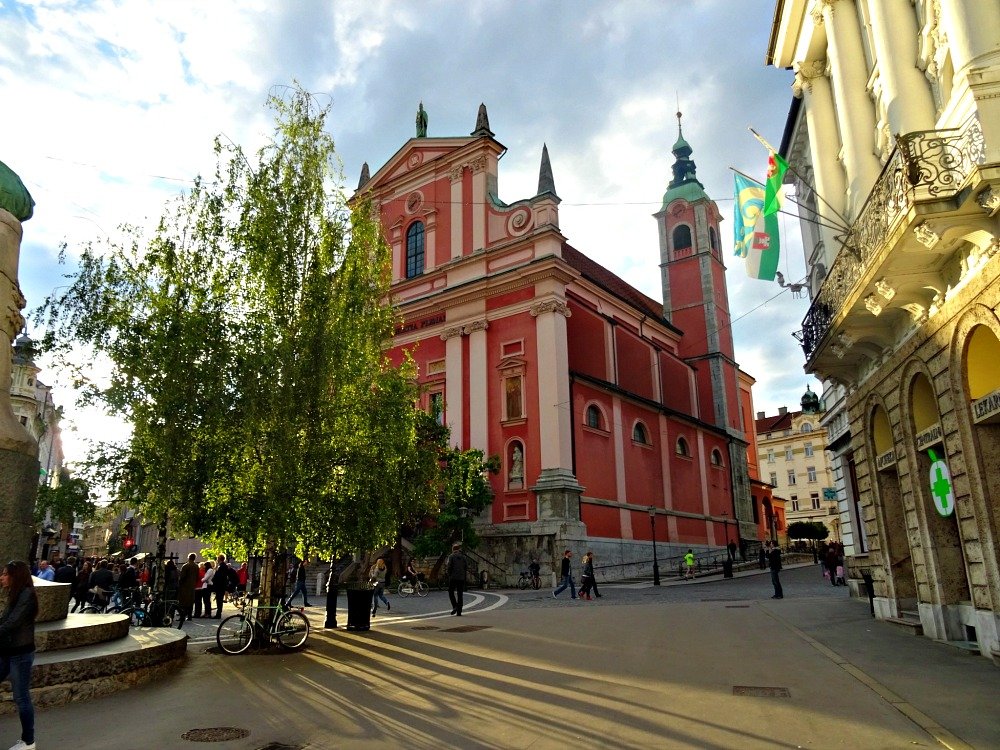
This is a very well-preserved temple and I’d say was well worth the drive. It is yet another place I have never heard of in Italy. I must put it on the agenda for 2017!
I would have detoured to this place gladly. If you have been to places like Athens, you understand how well preserved that Concordia Temple is. Magnificent! I am used to see the temples in pictures by themselves. I didn’t know the city was located so close. Kind of the same effect of the Pyramids of Egypt. You think they are locate din the desert and when you visit, you notice there are views of the city form the site.
I have been to Athens Ruth albeit a long time ago. It is lovely to see such an intact temple as in Agrigento.
I think Marty has the right idea about never driving the same route. What an excellent travelling team you are. And what a fascinating place. Icarus looks like a fallen angel. You’d think they’d have employed the clay thing in all the buildings and structures. It’s clearly survived a few earthquakes.
Yes if they built Concordia with a clay underlay then why not the others? Maybe there was only one piece of clay? Nah, doesn’t seem likely.
Your photos are absolutely stunning!! What gorgeous views from the “valley” 😉
Yep photos of the valley from the valley lol.
Hi Jan. I have visions of your little car galloping along the road (giggle). I’m assuming it wasn’t the yellow topless! 🙂 What a gorgeous find. Definitely worth the risk of fines and a bit of chaos. The scenery is out of this world, and they really are first class ruins. Thanks for explanation of the statue laying on ground. I thought he looked awfully well preserved! 🙂
This particular car was not memorable Nancie and was definitely not THE yellow topless!
We’d be like you and not want to drive the same route twice. Dave would also take the road less travelled 😉 The Valley of the Temples looked well worth the diversion despite the brain rattle!
Yes Marty loves the road less travelled and I certainly like back roads better than highways although in Sicily the back roads can be a tad frustrating to navigate.